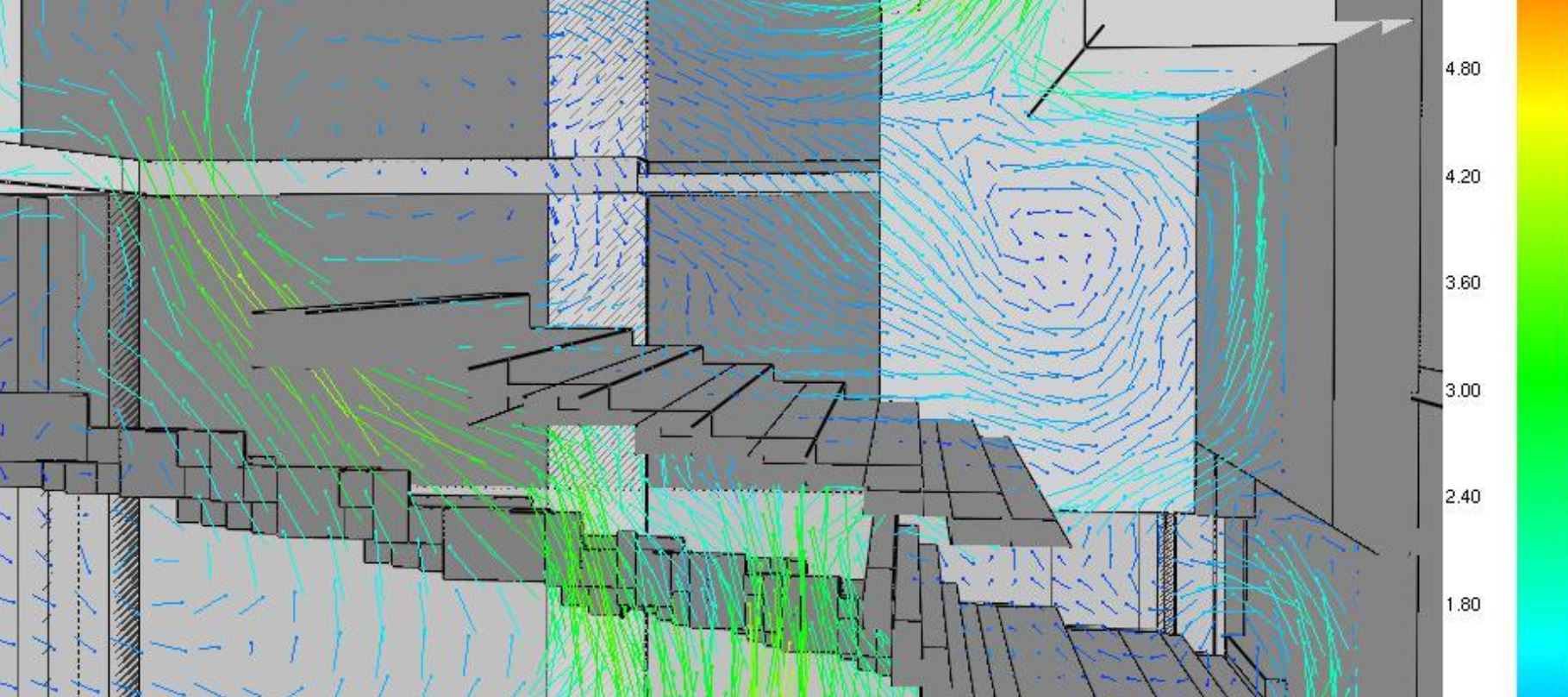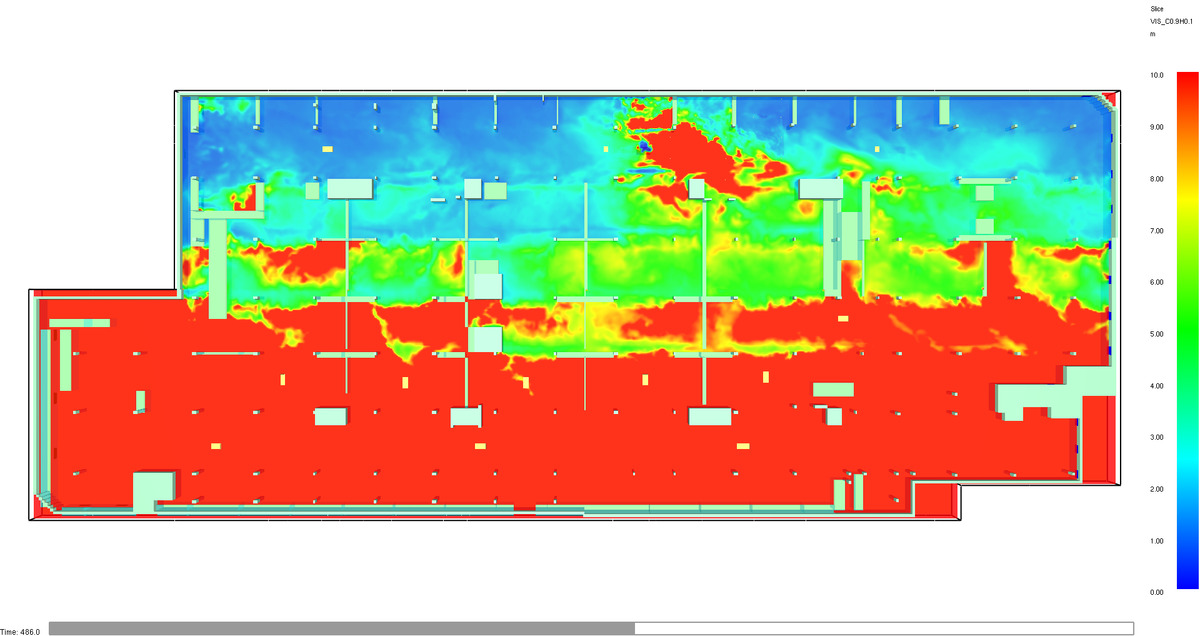Headquartered in Wellington, New Zealand, engineering firm Holmes Group has five specialty engineering subsidiary companies in locations around the world. One of these, Holmes Fire, wanted to run faster, less expensive fire simulations using high-performance computing to be able to deliver better design alternatives and services to more customers. Together with Theta, Holmes Fire built a service based on Microsoft Azure and Azure Batch, which returns simulation results hundreds of hours faster. That’s how Holmes Fire saves time—and lives.
We tested a model that ran in New Zealand for 336 hours, and it ran for just 56 hours in the environment we built in Azure. That’s more than a 400 percent improvement in turnaround on average.- Sebastian Herrmann: Technology Transformation Director, Holmes Group
Predicting the formerly unpredictable
Seconds. That could be the difference between life and death in a building fire. At Holmes Fire, a Holmes Group subsidiary, specialised engineers use complex fire dynamics simulation (FDS) computer models to predict how fires behave to optimise fire safety in building designs. Those models could take weeks of costly run time, until now. With Microsoft Azure Batch, the firm is slashing simulation times. Its new Fire Dynamics Simulator tool helps engineers improve complex building designs at a lower cost, unleashing growth potential for Holmes Fire.
“Life safety in a building is paramount,” says Sebastian Herrmann, Technology Transformation Director at Holmes Group. “You can have the most elaborate, beautiful structures, but if you can’t get people out when there’s a simple fire, that’s a hell of a problem.”
The simulations require massive computing resources—taking 48 hours on average, with large models taking more than 300 hours of compute time. Plus, arranging the server time and managing notifications kept engineers from value-added design. The models ran differently in every country where Holmes Fire operates because of varying availability and service costs. It was impossible to pause and rerun jobs. Time and expense constrained the number of iterations that could be run to increase accuracy. Senior Fire Engineer Garth Hay notes that fewer iterations delay the design process. “You don’t want to wait 300 hours to find that there’s a design error,” he says.
The Holmes Group IT team wanted an easy, cost-effective, and scalable environment for FDS simulations that would be consistent across its global operations.
Shattering productivity barriers with the cloud
Holmes Fire worked with Theta, a Gold competency member of the Microsoft Partner Network with deep cloud expertise. Theta consultant Emmanuel Auffray says, “The support we had from Microsoft was tremendous. All collaborations should be like ours.”
Theta and the Holmes Group IT team capitalised on Holmes’s existing investment in Azure, adding the services they needed. Their environment uses the Web Apps feature of Azure App Service to facilitate data uploading and Azure Active Directory to notify engineers by email when simulations are complete. Azure Blob storage receives the output. Upon receipt of the data, the Azure Batch back end spins up Azure high-performance computing (HPC) resources on demand and preloads the FDS analysis software images. And Holmes can use Azure Blob storage long-term archiving for future business insights. Intensive testing of the completed proof of concept (PoC) has revealed stunning results.
“We tested a model that ran in New Zealand for 336 hours, and it ran for just 56 hours in the environment we built in Azure. That’s more than a 400 percent improvement in turnaround on average,” says Herrmann. “We want our engineers to be able to spend more time analysing the outputs from these models, rather than scrambling to find an available server, waiting for the job to run, and then moving data around so they can access and analyse it.”
By moving to Azure, Holmes Fire has boosted collaboration among all design team members. “We work more easily with customers throughout the process,” says Hay. “Architects are using technology to design buildings with significantly more complex interiors than ever. Taking too long to get answers from our models can strongly impact all design professionals on the project.”
The firm no longer struggles with limitations in the number of simulations it runs and other parameters. “We derived real benefit from using the Azure platform and working with Theta because we could create our PoC to learn how to tweak our modelling methods, saving significant time and expense,” says Herrmann. “We don’t yet have hard numbers about engineering time saved, but the benefit is so obvious that we plan to roll out the new Azure environment immediately. Most important, we’ve got the promise of unlimited compute, great scalability, and the ability to run jobs concurrently. That’s flexibility we’ve never had before.”
It’s a paradigm change. “The idea of this increased efficiency would have been a dream in an ethereal future just three years ago,” says Sam Mulholland, Chief Information Officer at Holmes Group. “But we’ve been able to use Azure to give our problem solvers a way to solve things that we wouldn’t otherwise ever have considered.”
Find out more about Holmes Fire on Twitter and LinkedIn.
The idea of this increased efficiency would have been a dream in an ethereal future just three years ago. But we’ve been able to use Azure to give our problem solvers a way to solve things that we wouldn’t otherwise ever have considered. – Sam Mulholland: Chief Information Officer, Holmes Group
****************************************************************


